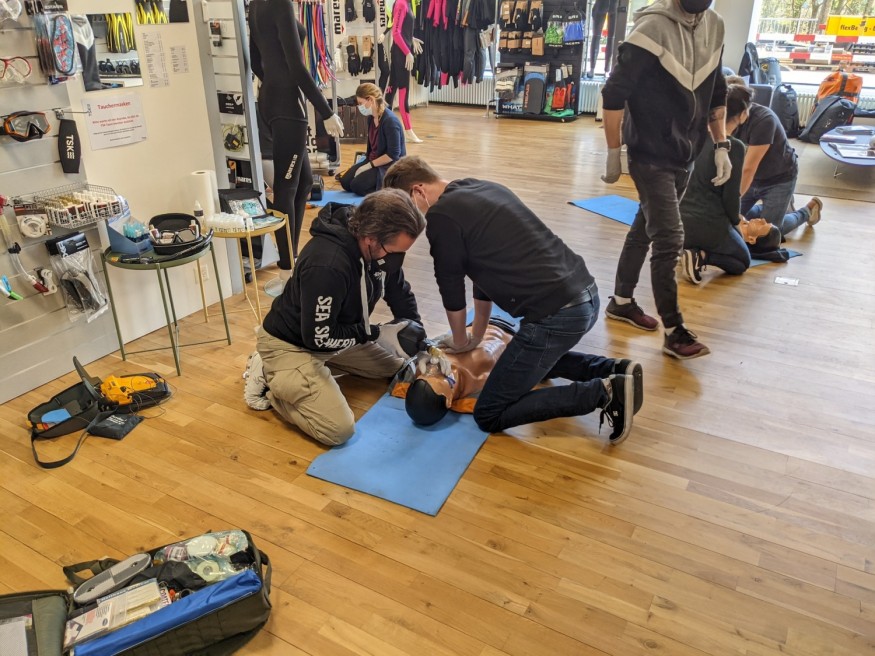
Camping is a great way to experience the outdoors and enjoy nature's gifts. Although camping is great fun, you must stay prepared for remote medical emergencies. Skills Training College will reveal five important first-aid products you should bring on your next camping trip.
When outdoors, rough and hilly terrains can cause injuries that may require medical attention.
If you cannot access medical equipment in remote areas, the situation can become dangerous, and assistance may be difficult to reach.
To ensure this situation does not happen to you while you explore the outdoors, it is vital to always keep a first aid kit with effective materials in your possession.
These are the essential first-aid products you must pack with you when camping.
Compression Bandages
Placing compression bandages in your first aid kit is vital for campers in remote locations.
Injuries such as cuts, sprains, strains and snake bites can all be treated with compression bandages.
Applying these bandages can help individuals reduce swelling and control the flow of venom from travelling through their bodies.
Wrap the material around the affected area tightly without cutting off blow flow to use a compression bandage for a sprain or strain.
You can wear a brace once the wound has been wrapped to protect the injury from further harm.
Depending on the severity of the injury, you may need to call for emergency assistance.
Snake bites, potentially infected wounds and suspected broken bones require immediate medical assistance.
Emergency Blanket
Another useful first aid product for camping trips is emergency blankets.
Also known as space or Mylar blankets, this product is made of metalised polyester film and a thin layer of vaporised aluminium.
The blanket's materials are designed to reflect 90% of your body's heat, ensuring you are kept warm when suffering from shock or cold conditions.
Using an emergency blanket with another material, like a woollen blanket, can increase its effectiveness and the warmth your body retains.
Along with retaining warmth, emergency blankets are water-proof, allowing them to be used in wet environments.
To use an emergency blanket effectively, wrap the material around your entire upper body and shoulders.
If it is raining, place the blanket over the top of your head to shield it from water and retain heat throughout your body.
People showing signs of shock, hypothermia or loss of consciousness need emergency assistance once you place the blanket over them.
Survival Whistle
When faced with a remote crisis requiring extra assistance, survival whistles can be a useful first-aid product.
Blowing a survival whistle is a great way to alert others that you or the people around you are in danger.
These whistles create an extremely loud sound that can travel long distances without excessive blowing.
Learning the international whistle-signalling code can help you communicate with others when calling for help.
Here are the different types of whistles and their meaning;
One whistle: asking for surrounding people's location
Two whistles: calling for others to come to your area
Three whistles: I need immediate help
You should keep a one-second gap between whistles to allow the sound to travel across the area.
If you have whistled a code and received no response, try again in 30 seconds.
Once found, call for emergency assistance if you have been significantly wounded or injured.
Antiseptic Wipes/Creams
Cuts and scrapes often happen during camping trips or outdoor activities, so you should always carry antiseptic wipes or creams to reduce the chance of an infection.
These products contain safe chemicals that kill viruses and bacteria within open wounds.
Before applying any dressing to an open wound, you must sanitise the area covering it.
The correct way to clean a cut or scrape with an antiseptic product is to gently wipe the product or cream across the affected area, removing any granules or foreign substances.
Once you have wiped down the area, assess it and call for emergency help if the injury is bleeding even after applying pressure, has been caused by an animal bite, is deeper than a few millimetres, or you cannot clean the particles out of the wound.
Gauze Pads
A sterile and durable material, gauze pads are an effective first-aid product that should be packed before a camping adventure.
Gauze pads come in various shapes and sizes, allowing people to cut them according to the length of a wound.
Some uses include cleaning wound sites, absorbing liquid such as blood and creating a barrier between a burn or cut and the bandage above it.
When using a gauze pad, you must begin by sterilising the injured area and placing the material over the wound.
Once the burn or laceration has been covered, you can wrap a bandage over the affected area to secure the pad and apply pressure on the injury.
To keep the area clean, replace the gauze pad every 25 minutes after the initial injury and three times a week after the wound stops bleeding.
Wounds that begin excessively bleeding through the gauze pad need immediate emergency assistance and should be treated seriously.
Learn more about effective first-aid materials and how to apply them with First Aid Course Expert's nationally accredited courses.
With locations in Tullamarine, Dandenong and more, there is always an accessible course nearby.
© 2025 NatureWorldNews.com All rights reserved. Do not reproduce without permission.





